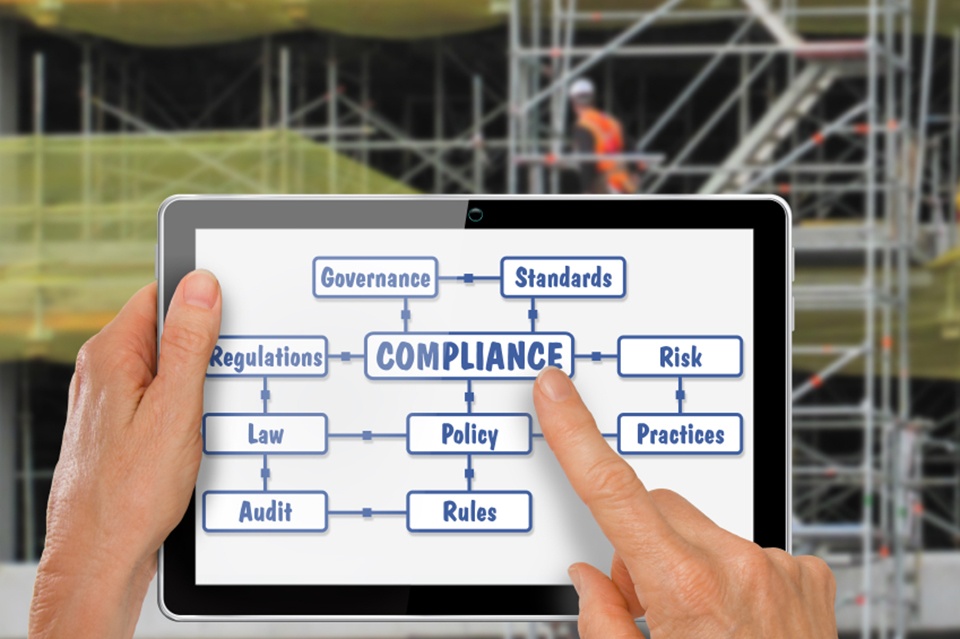Getting Started with Agile in a Regulated Environment
Globally, enterprises are under increased regulatory pressures to meet ever-changing governance, risk, and compliance (GRC) demands. Enterprises that operate in regulated industries are constantly subjected to stringent audit and scrutiny to ensure adherence to the guidelines laid down by regulators. With each passing day, as internal and external threats continue to rise, enterprises are concerned about their ability to keep up with the regulatory changes. There is a constant endeavour by enterprises to keep a close tab on these changes and implement these to avoid massive fines, legal ramifications, and reputational damages.
Today’s enterprises are looking for robust tools and methodologies to help them meet compliance and regulatory requirements. To be successful, enterprises operating in such environments need to be on top of their game by adopting newer technologies, which enable them to be innovative and agile. In this post, we evaluate how agile can enable enterprises operating in a regulated environment to stay on top of the changing landscape and look at other factors to be considered while implementing agile.
Agile and Regulated Environments
Implementing methodologies such as agile in a regulated environment requires a cultural shift within an organization. Since agile teams often operate in smaller teams, it makes skeptics worry about the fact that multiple smaller teams working autonomously might result in a lack of accountability, governance, and control. However, what skeptics fail to understand is that leveraging best practices to apply agile in regulated environments can have major benefits, including improved speed-to-market, reduced cost, and improved outcomes.
In an agile environment, effective compliance management means applying agile methodologies to build software products that have the highest possible quality, while assuring adherence to all regulatory and compliance standards. Implementing agile in a complex regulated environment can present unique challenges that include high-risk projects, unclear requirements, tight deadlines, etc. However, if planned and managed proactively it can lead to enterprise-wide benefits such as improved quality, stakeholder engagement, predictable delivery, etc.
Implementing Agile in Regulatory Environment
Large enterprises often operate in highly complex environments that are governed by a multitude of regulations. Introducing agile in a regulated environment at an enterprise can make it easier for teams managing products to work incrementally on any regulatory changes that are introduced midway i.e. during the product development phase. Agile is a great way to better respond to changing business dynamics and uncertainties, especially in highly regulated business environments. Since the teams are smaller, structured and well-defined they are better equipped to incorporate any new iterations or changes quickly.
It is extremely crucial for business analysts, product owners, and teams to clearly understand the regulatory and compliance guidelines that apply to their industry and product offerings and the ramifications of any lapses. With the constantly changing guidelines, business analysts must stay on top of these changes and keep other stakeholders (developers, software testers, etc.) abreast of these changes. A great approach for business analysts/product managers would be to identify and engage with key stakeholders (legal, compliance and risk management) within their organizations to be on top of the regulatory changes. This helps in improving their understanding of regulatory compliance and its impact.
Additionally, enterprises can make use of the Blueprint's integration with Compliance.ai to provide automated, customized alerts on new or changing regulations that will increase productivity and efficiency. Further, the solution delivers relevant content with personalized insights, obligation analysis, and risk assessment enabling enterprises to transform the way they address compliance risk.
Video: Watch Tony Higgins, CTO - Blueprint talking about regulatory compliance management.
Teams and Communication
In large enterprises, teams often have cross dependencies and there is always a need for additional coordination when planning product iterations. During the product development stage, development teams often interact to share knowledge, feedback, set priorities and engage each other in refining requirements. It is during such phases that robust capabilities of agile project management tools prove to be extremely handy. Modern agile compliance management tools include features such as tagging, commenting, and decision-tracking, which ease communication, provide transparency and helps in maintaining a record of requirements deliberation, which is considered crucial in heavily regulated industries such as banking, pharmaceutical, automobile, etc.
Product Management Software
Even in today’s digital era far too many enterprises still rely on traditional methods such as excel-based spreadsheets, word processors, and emails to manage their compliance requirements. The manual way of managing agile compliance requirements is highly ineffective and prone to errors. Hence, enterprises need to move away from such practices by investing in the right product management software, which helps them version their regulatory and business artifacts while complying with the audit requirements. Modern agile product management tools such as Blueprint help leaders track the progress made by teams via charts, metrics and reporting features thereby ensuring timely product roll-outs.
Strong Governance Model
Having a strong governance model in place is highly essential for the successful adoption of agile. A strong governance model helps enterprises in defining & regulating policies and outlining strategies to be implemented thereby enabling successful outcomes. Effective governance helps in aligning executive sponsorship across functions, broad agreement on the business cases and desired business results. Effective governance also provides teams with realistic expectations around deliveries, quality assurance, and documentation.
Quality Assurance
Rigorous quality assurance and routine audits are extremely important in regulated industries. It has been observed that sprints create a risk of rushed software testing cycles. In the process of trying to get through sprints as quickly as possible, QA teams tend to focus on the timelines and overlook critical aspects of testing, which can have significant repercussions, especially in a regulatory environment. Major defects often go undetected or detected too late in the development cycle leading to increased development effort and costs. Enough attention needs to be devoted to quality assurance, as any failure to properly demonstrate a compliant solution can have significant repercussions including regulatory and reputational risks.
Final Thoughts
Enterprises in the regulatory industry are looking for various options to overcome the regulatory challenges impacting their domains. Rapid advancements in technology are proving to be a customers and improve their bottom lines. With the right tools, teams operating in such regulated industries can keep a closer watch on the changing regulatory landscape and easily incorporate these changes into their development processes.
Blueprint – Agile Product Management Software
With Blueprint, agile software development just got a whole lot easier. Blueprint makes complex agile software development initiatives easier by aligning business strategy and compliance with IT execution. This enables enterprise teams to drive innovation, reduce risk and waste, and unlock unrealized business value throughout the development lifecycle. To learn more about the Blueprint product management tool, contact us today!
Share this
Recent Stories

Automation Compliance and the Impact of the COVID-19 Spike in Regulations

Business Analysts: Do You Understand Your Regulatory Environment?

